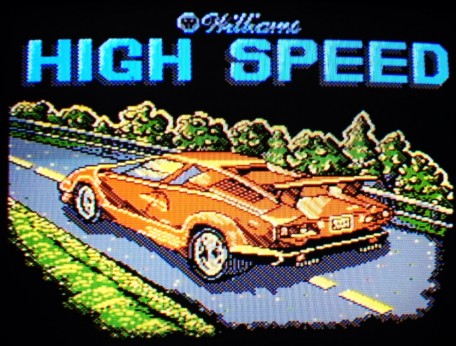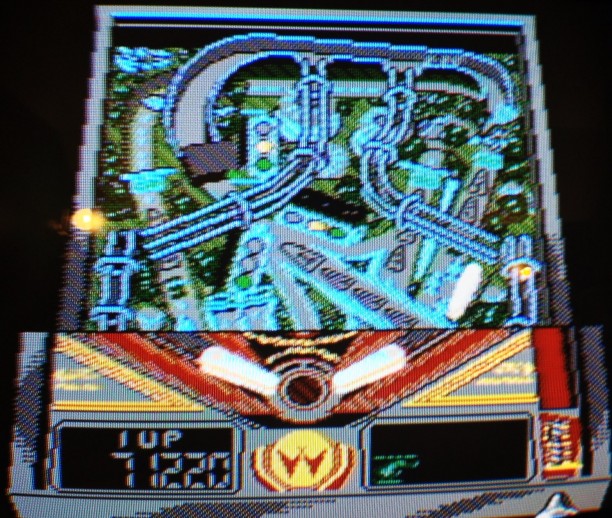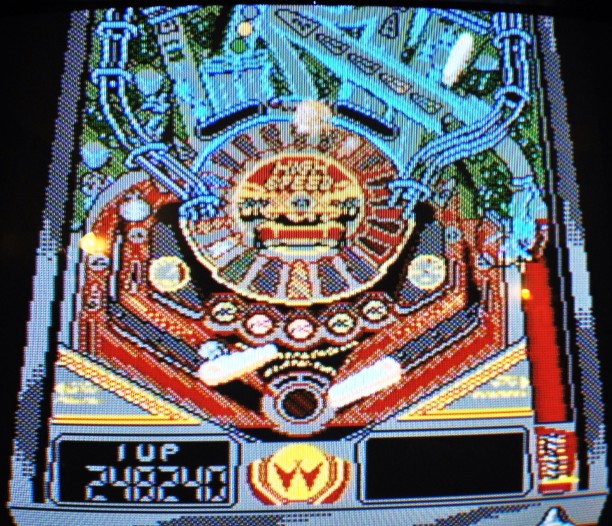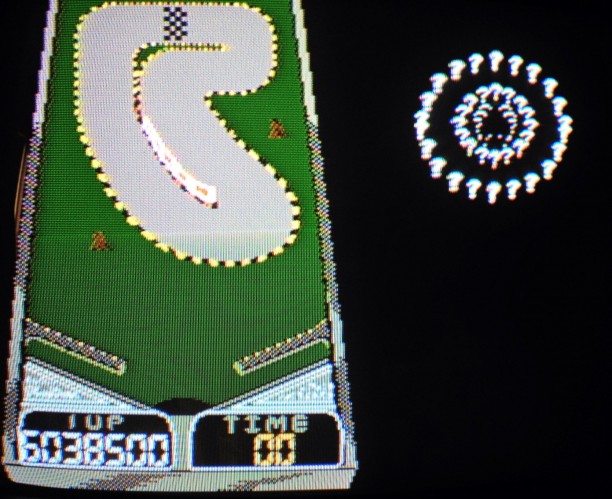
Pinball Alley
Pinball Alley: High Speed
The first time that I saw High Speed in my local mall arcade, I was in awe.
Actually, I didn’t see it at first. I heard it. The arcade operator had set the volume to maximum, so the sounds of sirens, officer chatter, and other effects reverberated off of the back wall and towards the front entrance of the arcade. Upon hearing the sounds, I had to see where they came from, and that’s when I saw the machine for the first time. A sleek black, yellow, and orange color scheme adorned the table. There was a red police-style chase light on the top of the scoreboard. An extra flipper located at the top right of the table beckoned players to shoot the ramp just to the left. And three-ball multiball meant high scoring if players were able to keep the ball in play, with the allure of a progressive jackpot that could approach four million points in some cases.
It wasn’t long before I started spending most of my weekly arcade fund solely on this machine. I had some good days and some not-so-good days, but I could generally keep up with older and more skilled players when playing multiplayer. Naturally, when Tradewest published a version of High Speed for the NES, developed by RARE Coin-it, in 1991… I had to own it. After all, RARE had done a pretty good job with its interpretation of Pin*Bot. As long as those annoying table obstacles were gone, I would be happy.
I didn’t quite get my wish about the table obstacles, as you’ll see, but I did get a very enjoyable home version of one of my favorite pinball machines. It’s also still the only console version of the High Speed pinball table that exists today, some 27 years later. Does High Speed for the NES still have some get up and go today? You bet it does.
As with Pin*Bot, the camera follows the ball for most of the screen, leading to scrolling. As you can see above, the top of the playfield is where the main objective for High Speed awaits. The goal is to advance the traffic light from green to yellow to red by completing three banks of impact targets. Once the light turns red, players must then use the upper flipper to “run the red light” by converting a ramp shot. In a red light condition, players must then hit the ramp shot a second time to get away from pursuing police. Doing so begins multiball mode. The second ball must be launched at full force with the plunger to lock in the second of the two metal capture tubes. The third ball, when launched, then prompts the ejection of the two locked balls, leading to a rather chaotic three-ball multiball session. If the player can convert a ramp shot while in multiball mode, the progressive Hideout Jackpot is awarded and multiball continues until the second and third balls are lost.
The obvious strategy for High Speed is to initiate multiball as soon as possible by completing the green, yellow, and red light targets. Spotting them with shots to impact targets is one way. Another way to spot lights is to shoot the ball into a capture lane that is just to the left of the upper flipper. A third way to spot lights is to complete ramp shots using that upper flipper. In addition to spotting lights, executing ramp shots also increases the outhole bonus multiplier up to 5X and scores a fairly generous Ramp Bonus. The capture lane ejects the ball to the right and towards the upper flipper, which can be capitalized on to hit a ramp shot. It’s a two-way combo of sorts, and while players don’t get a special bonus or recognition for completing the combo, it’s a recommended one to learn and execute.
One of the reasons why players will want to learn to get multiball going as quickly as possible is to limit the amount of havoc that table perils can wreak on the lower areas of the playfield. Like Pin*Bot, the NES version of High Speed has certain table perils that can have damaging consequences. Unlike Pin*Bot, however, these perils do not have any kind of progression system. They are completely random, and include:
- A puddle of water that can slow the ball down
- A dust devil that can capture the ball and carry it to the outhole
- Balls of acid that can affect flippers
- Bombs that can destroy flippers
The dust devil peril is the most common– and the most dangerous. It’s similar to the ball-eating alien from Pin*Bot, but it traverses the bottom two-thirds of the playfield instead of being static and the ball can be freed from the peril with repeated nudging of the table using the B button. Too many nudges can lead to tilt warnings and eventually a full tilt, which ends the player’s turn. The big problem with the dust devil is that nudging only works some of the time and, in many cases, a second dust devil quickly appears and forces more nudging. That often leads to full tilt situations, which are very costly. The dust devil can be dissipated by shooting the ball with force directly at it, but if the ball doesn’t have enough momentum, it winds up being captured. It’s a better strategy to try and avoid it if possible.
The other perils are more forgiving. The puddle of water is innocuous. Slowing down the ball speed isn’t necessarily a bad thing, although it can affect ball trajectory and sometimes send the ball straight down. The acid balls and bombs can be eliminated by shooting the ball into them, but if the ball is in the upper playfield and the projectiles hit their intended targets, playing with one flipper at the bottom instead of two can be a real challenge.
Aside from the table perils, there are also several different types of icons that appear during gameplay which can be captured. A moneybag icon is worth an increasing amount of bonus points each time it’s collected. The other two icons, which are helicopters and safes, lead to bonus stages if three like icons are collected. The helicopter takes players to a car racing bonus stage, where the objective is to lead the red car to victory by completing nine laps first and within the allotted time. Hitting the red car with a ball makes it accelerate and hitting it again while accelerating gives it a turbo boost. Hitting the other cars with a ball slows them down. This stage also has bonus icons, including turbo boosts and time extenders, to shoot for. The safe icons take players to a pachinko-style game board, where the objective is to seat balls in all of the holes by launching them from below. It’s like playing Peggle, but inverted, and with a goal of locking balls instead of lighting up pegs. This is the tougher of the two bonus levels. If players can complete either of the bonus levels three times, a mystery bonus is lit in the capture lane. This bonus can range from adding an extra kickback in the left outside outlane to a ball saver and more.
One last notable feature of the High Speed table is the Freeway Value. The Freeway refers to the outside orbit that starts at one spinner in either the upper left or upper right portion of the playfield and carries the ball around and across the top of the playfield over to the other spinner. In order to collect the Freeway Value, it must be spotted by having the ball go down the left or right flipper outlanes. If the left outlane is hit, the Freeway Value lights for the right spinner. Conversely, if the right outlane is hit, the Freeway Value spots for the left spinner. The Freeway Value starts at 25,000 points, then increases after each time that it is collected to 50,o00 points, 75,000 points, and then 100,000 points. Collecting the Freeway Value a fifth time during a turn lights an extra ball chance in the capture lane, so it’s a good idea to work on collecting these Freeway Values during each new turn. It’s also worth noting that entering the Freeway orbit from the left sends the ball around and over to the upper flipper, making for a ramp shot opportunity.
Despite the annoying table perils, High Speed is a fairly easy pinball table to learn and master. Flipper timing is an important skill for success here. It’s a bit of a challenge to learn the proper timing for some of the key shots, and this timing can be complicated by the table perils. Once multiball is engaged, there’s an additional strategy of trying to avoid hitting the ramp shot and waiting until the Hideout Jackpot reaches a high level. I usually try to hold off until the jackpot is up over a million points or higher. Since the jackpot rises during multiball at the same pace as the score increases, it’s best to shoot for Freeway Value shots as much as possible. A few 100,000 point shots mixed in with the usual chaos of multiball can inflate the Hideout Jackpot quickly and make it worthwhile to collect before long. Remember, too, that if the jackpot isn’t collected before multiball ends, the jackpot amount stays intact until the next time multiball is initiated, including when starting a new game. Unfortunately, though, there isn’t a battery backup in High Speed so powering off will wipe out the progressive jackpot and any high scores recorded.
Despite the issues with table perils, RARE’s vision for High Speed for the NES executes well by delivering the core pinball experience that fans of the coin-operated machine know so well and adding a few extras along the way that hold interest well. The bonus stages seen here have since been expanded on in other pinball games, most notably from Zen Studios. Tables like Moon Knight and The Clone Wars have bonus areas for players which are still very much pinball-based, but are completely separate from the main action and add something extra to the experience instead by a generally static one. The ball physics are similar to that of Pin*Bot, so balls tend to find more flipper outlanes than drains and tend to further encourage higher scoring. Three-ball multiball is more hectic– and more exciting– than the two-ball play in Pin*Bot, and the jackpot progression isn’t as rigid, which allows for higher scoring overall. The table aesthetics are quite good, especially for the time. It looks and feels like a High Speed machine, and sounds of sirens and police chatter make it that much closer to having the arcade experience at home.
Until Pinball Arcade finally delivers a version of High Speed, this is a more than worthwhile option. Go and get it– just don’t look to outrun the police while doing so. It’s got my recommendation.


